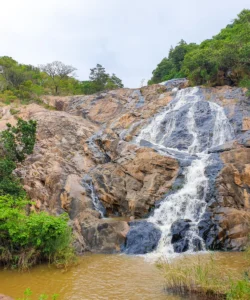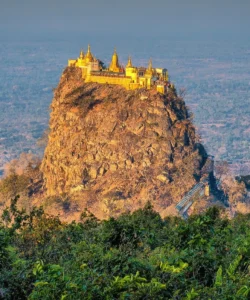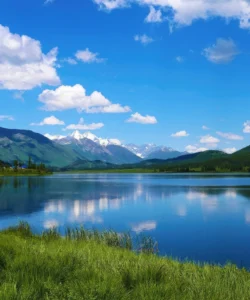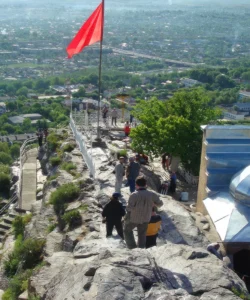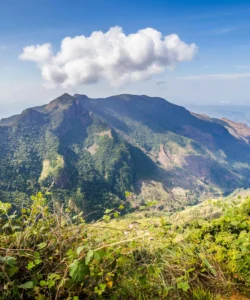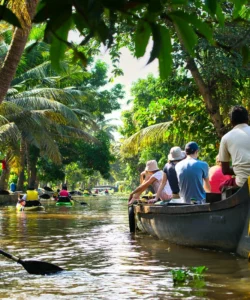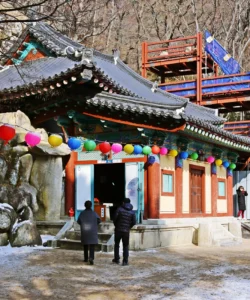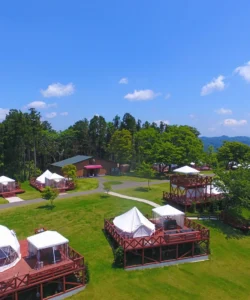Mount Matavanu is an active volcano on the island of Savai’i, Samoa, whose crater is a site of dramatic natural history and lush rejuvenation. The volcano is most famous for its prolonged and destructive eruption from 1905 to 1911, which dramatically reshaped the landscape of northeastern Savai’i. Lava flows from this eruption buried large areas of land and several villages, creating the vast Sale’aula Lava Fields that are still visible today. Now dormant, the deep crater is overgrown with a verdant, thriving rainforest, offering a stunning contrast between its violent past and its tranquil present.
![]()
Name and Address
- Name: Mount Matavanu.
- Address: Located in the northern part of the island of Savai’i, Independent State of Samoa. The main access is inland from the village of Safotu.
How to Get There
Reaching the Mount Matavanu crater is an off-road adventure that requires a suitable vehicle and a sense of exploration.
- By 4WD Vehicle (Essential): The track leading up the mountain is a rough, narrow, and bumpy old lava flow. A high-clearance 4×4 vehicle is absolutely necessary to navigate the terrain. The drive from the turn-off near the village of Paia to the end of the track takes a considerable amount of time (45-60 minutes or more).
- The Route: From the main north coast road, you turn inland near the village of Safotu towards Paia. From there, a signposted track leads up the mountain.
- “Da Craterman”: For many years, the track was maintained by a local legend known as “Da Craterman” (Se’u), who would greet visitors, collect a small village fee (around ST20 per person), and share stories. While his presence may vary, visitors should still expect to pay a customary fee to his family or the village for access.
- Final Hike: From the end of the 4WD track, a short 10-15 minute walking trail through dense bush leads to the rim of the crater.
Landscape and Architecture
The “architecture” of Mount Matavanu is entirely natural, a powerful display of volcanic creation and ecological recovery.
- The Crater: The crater itself is a massive, steep-sided bowl, approximately 200 meters (650 feet) deep. Unlike the barren craters of more recently active volcanoes, Matavanu’s is now completely filled with a dense, lush, green rainforest, a testament to nature’s ability to reclaim the land.
- The Lava Flow Landscape: The journey up the mountain takes you directly over the solidified lava flows from the 1905-1911 eruption. This rugged, moon-like terrain of black volcanic rock is now interspersed with regenerating vegetation, creating a unique and beautiful landscape.
- Panoramic Views: From the crater’s edge, there are magnificent, breathtaking views over the surrounding jungle and across the northern and eastern coasts of Savai’i island.
What Makes It Famous
Mount Matavanu’s fame is built on the story of its historic eruption, the unique character of its caretaker, and the raw adventure required to visit it.
- The 1905-1911 Eruption: The volcano is most famous for its historic, six-year-long eruption. This event was a significant moment in Samoan history, displacing communities and leaving behind the dramatic Sale’aula Lava Fields on the coast—a related and must-see attraction that shows the destructive power of the lava flows.
- “Da Craterman”: The experience of visiting was long intertwined with meeting the charismatic Se’u, “Da Craterman.” His hospitality and the visitor book and signs he maintained, representing over 190 countries, became a legendary part of the journey.
- A Raw Adventure: A trip to Matavanu is a true off-road adventure. The challenging 4WD journey through the jungle and over old lava flows makes reaching the serene, green crater a rewarding experience for adventurous travelers.
- Geological Heritage Site: In recognition of its importance as a prime example of oceanic hot spot volcanism, the International Union of Geological Sciences (IUGS) included the 1905-1911 Matavanu eruption in its prestigious list of the first 100 Geological Heritage Sites in the world.
Differences from Other Wonders
Mount Matavanu offers a distinct experience compared to other volcanic sites and natural wonders.
- Lush Rebirth vs. Barren Craters: Many famous volcanic craters are stark, barren, and steaming, showcasing raw geological power. Mount Matavanu is unique because its deep crater is now a hidden, self-contained rainforest. The story here is one of dramatic rebirth and the resilience of nature.
- An Adventure Journey, Not an Easy Lookout: Unlike many volcanic viewpoints that are accessible by paved roads or cable cars, the journey to Matavanu is a rugged, off-road challenge. The adventure of getting there is a fundamental part of the experience.
- Paired with its Aftermath: The Matavanu experience is intrinsically linked to the Sale’aula Lava Fields on the coast. A visit is incomplete without seeing both the source (the crater) and the result (the devastated villages and lava plains). This creates a powerful, two-part geological story that is rare to find so clearly laid out.
- Personal and Cultural Connection: For years, the experience was defined by the personal interaction with “Da Craterman.” This human element and connection to the local village and its history provide a cultural depth that is different from a purely natural, unmanaged site.

